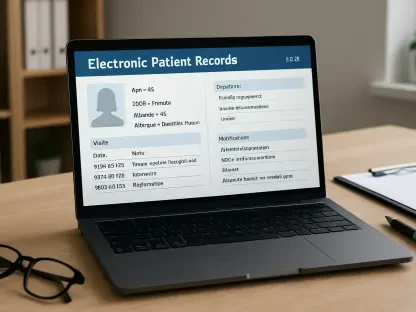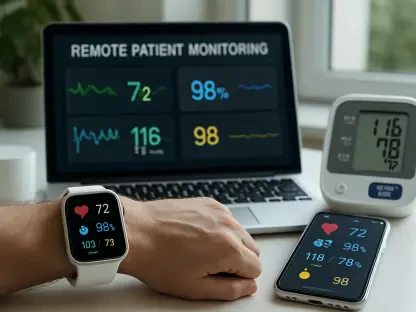In the ever-evolving landscape of medical technology, few sectors face as much scrutiny and opportunity as the market for portable oxygen concentrators (POCs), where Inogen Inc. has carved out a significant niche. Recently, the company’s Q2 earnings report, released on August 9, has sparked considerable interest among investors and industry watchers alike. With a notable 4% year-over-year revenue increase and strategic maneuvers that hint at a potential turnaround, Inogen appears to be gaining ground despite navigating a minefield of regulatory constraints, competitive pressures, and supply chain disruptions. This performance comes at a critical juncture for a company known for supporting patients with chronic respiratory conditions, as it seeks to balance innovation with operational stability in a challenging environment. The following analysis delves into the specifics of Inogen’s financial achievements, strategic initiatives, and the broader industry dynamics shaping its path forward, offering a comprehensive look at whether this momentum can be sustained.
Financial Milestones: Signs of Stability
Inogen’s latest quarterly results paint a picture of cautious optimism for a company that has faced its share of struggles. The reported revenue of $92.3 million reflects a 4% increase compared to the previous year, a figure driven primarily by robust growth in international markets and business-to-business (B2B) channels. What stands out is the consistency of this growth, marking six consecutive quarters of mid-single-digit gains—a commendable feat in a sector rife with economic and operational headwinds. Beyond revenue, the company has tightened its fiscal belt, trimming operating expenses by 4.7% to $47.5 million. This cost discipline, paired with a positive adjusted EBITDA of $2.1 million for the second straight quarter, underscores a shift toward profitability. With cash reserves standing at a healthy $123.7 million, Inogen seems well-positioned to weather short-term uncertainties while investing in future opportunities, signaling a financial foundation that could support a broader recovery.
Delving deeper into the financial narrative, the implications of these numbers reveal a strategic focus on efficiency that sets Inogen apart from some of its peers. The reduction in operating costs isn’t merely a reaction to market pressures but a deliberate effort to streamline operations without sacrificing growth potential. This balance is critical in a sector where margins are often squeezed by external factors like reimbursement policies and supply costs. The sustained positive EBITDA suggests that management’s efforts to optimize resources are bearing fruit, providing a buffer against unexpected downturns. Moreover, the substantial cash position offers flexibility—whether for strategic acquisitions, debt reduction, or weathering supply chain storms. While these metrics are encouraging, they also raise questions about how much of this financial health can be attributed to one-time gains versus repeatable strategies, a distinction that will be crucial for long-term investor confidence in Inogen’s trajectory.
Strategic Directions: Innovation and Expansion
On the strategic front, Inogen is making calculated moves to diversify its revenue streams and adapt to evolving market demands. A significant push into B2B and international markets has paid dividends, with domestic B2B sales surging by 19.3% and international sales climbing 17.7% in the recent quarter. This shift reduces reliance on volatile consumer markets and taps into more stable, high-volume channels. Additionally, product innovations like the Voxi™ 5 stationary oxygen concentrator, tailored for long-term care facilities, and the Patient Portal, which enhances digital patient engagement, align with the industry’s growing emphasis on remote care solutions. These initiatives demonstrate an understanding of where healthcare is headed, positioning Inogen to capture emerging opportunities in a digital-first landscape while addressing the specific needs of its core user base.
However, not all aspects of Inogen’s strategic playbook inspire unreserved confidence, particularly when it comes to research and development (R&D). Compared to industry heavyweights like ResMed and Philips, Inogen’s R&D investment appears modest, casting doubt on its ability to keep pace with technological advancements such as AI-driven diagnostics or wearable health devices. While current product launches show promise, the long-term competitiveness of the company may hinge on whether it can allocate more resources to innovation without undermining its newfound financial discipline. The focus on international expansion also carries risks, including navigating diverse regulatory environments and cultural differences in healthcare delivery. Balancing these ambitious growth plans with the need for cutting-edge innovation will be a defining challenge for Inogen as it seeks to solidify its market position over the coming years.
Industry Headwinds: A Complex Battlefield
Turning to the broader environment, Inogen operates in a sector fraught with obstacles that test even the most resilient players. A heavy dependence on the U.S. market exposes the company to significant risks tied to Medicare reimbursement policies, where cost-containment measures could erode profitability for POCs. Beyond domestic concerns, global supply chain disruptions continue to hamper production scalability, creating bottlenecks that affect timely delivery and cost structures. Regulatory frameworks, such as the European Union’s Medical Devices Regulation (MDR), impose stringent compliance requirements that can delay product rollouts and increase operational overhead. These external pressures form a complex web of challenges that threaten to undermine even the best-laid strategic plans, requiring Inogen to remain agile in its response to an unpredictable landscape.
Compounding these systemic issues is the intense competitive dynamic within the medical devices space. Inogen finds itself squeezed between two formidable forces: large corporations with deep pockets and advanced telehealth offerings, and emerging low-cost manufacturers from regions like China that target price-sensitive segments. The former group pushes the boundaries of technology, integrating sophisticated solutions that could outpace Inogen’s current capabilities, while the latter threatens to erode market share through aggressive pricing. Navigating this competitive squeeze demands not only operational efficiency but also a clear differentiation strategy—something that may require bolder investments in technology and branding. As the company grapples with these dual threats, its ability to carve out a sustainable niche will depend on leveraging its strengths in specialized respiratory care while addressing the gaps in its innovation pipeline.
Investment Perspective: Weighing Risks and Rewards
From an investment standpoint, Inogen presents a nuanced opportunity that blends potential with uncertainty. The recent quarterly performance and strategic initiatives are undeniably positive, with the stock trading at a price-to-sales ratio of 12x, which appears undervalued compared to peers like ResMed at 8x. This valuation gap suggests a margin of safety for long-term investors, particularly those who believe in the company’s ability to execute on its growth plans. However, the path to sustained success is far from guaranteed, hinging on critical factors such as navigating regulatory mazes, ramping up R&D efforts, and penetrating high-demand regions like Asia-Pacific. For now, the consensus among analysts leans toward cautious optimism, viewing Inogen as a speculative play rather than a cornerstone for risk-averse portfolios.
Further scrutiny of the investment landscape reveals additional layers of complexity that potential stakeholders must consider. The volatility inherent in the medical devices sector, driven by rapid technological shifts and policy changes, means that even promising companies like Inogen can face sudden setbacks. Investors must weigh the allure of undervaluation against the tangible risks of reimbursement cuts or supply chain snarls that could derail growth. A prudent approach might involve allocating only a small portion of a diversified portfolio to Inogen, allowing exposure to its upside while mitigating the impact of potential downturns. Monitoring key developments—such as progress in international markets or announcements of new R&D initiatives—will be essential for gauging whether the company can translate its recent gains into a lasting turnaround, making patience a vital attribute for anyone considering a stake in this space.
Market Dynamics: Aligning with Broader Trends
Zooming out to the wider medical devices industry, the sector is undergoing a period of rapid transformation fueled by technological advancements and shifting demographic needs. Innovations in AI, telemedicine, and digital health tools are reshaping how care is delivered, with the market projected to grow at a compound annual rate of 9.8% through 2029. This expansion is largely driven by an aging population and a rising preference for home healthcare solutions, areas where Inogen’s offerings are directly relevant. While the company’s projected growth rate of 6% for the current year trails the industry average slightly, its focus on niche respiratory care markets and operational efficiency aligns with the trend toward targeted, patient-centric innovation. Capitalizing on these tailwinds could provide a significant boost if executed effectively.
Yet, aligning with industry trends is only part of the equation for Inogen; overcoming internal limitations and external barriers remains equally critical. The lag in growth rate compared to the sector average highlights the challenge of scaling in a crowded field where larger players often dominate through sheer resource advantage. The emphasis on digital health and remote care offers a clear opportunity, but it also demands a level of technological sophistication that Inogen must strive to achieve. Addressing gaps in R&D investment and navigating global regulatory landscapes will be pivotal to keeping pace with competitors who are already embedding advanced tech into their portfolios. As the medical devices market continues to evolve, Inogen’s ability to adapt while maintaining its specialized focus will determine whether it can ride the wave of industry growth or risk being left behind by more agile or better-funded rivals.
Path Ahead: Sustaining Momentum
Reflecting on Inogen’s journey through the recent quarter, the financial uptick and strategic shifts provided a much-needed boost to a company grappling with past inconsistencies. The revenue growth, cost reductions, and positive profitability metrics painted a picture of renewed stability, while efforts to diversify markets and innovate products hinted at a forward-thinking approach. However, the roadblocks of regulatory scrutiny, competitive intensity, and supply chain fragility loomed large, casting shadows over the durability of these achievements. For stakeholders and observers, the key takeaway was the delicate balance Inogen had struck between immediate gains and long-term uncertainties.
Looking to the future, the focus should shift toward actionable steps that can fortify Inogen’s position in a turbulent sector. Prioritizing increased R&D funding to match industry innovation trends, particularly in digital health, stands out as a critical need. Simultaneously, strengthening supply chain resilience through diversified sourcing and strategic partnerships could mitigate operational risks. Expanding deeper into high-growth regions like Asia-Pacific with tailored offerings may unlock new revenue streams. For investors, staying attuned to these developments—while maintaining a balanced risk profile—will be essential to navigating the speculative nature of Inogen’s stock. These steps, if pursued diligently, could transform recent progress into a lasting foundation for growth.









